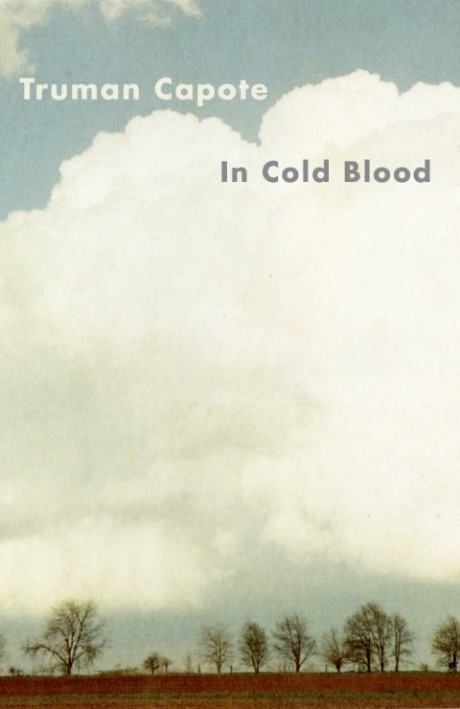Our book group choice for July 2006 is In Cold Blood by Truman Capote. On November 15, 1959, in the small town of Holcomb, Kansas, four members of the Clutter family were savagely murdered by blasts from a shotgun held a few inches from their faces. There was no apparent motive for the crime, and there were almost no clues.
On November 15, 1959, four members of the Clutter family were brutally murdered in their home in Holcomb, Kansas. The victims were Herbert Clutter, his wife Bonnie, their daughter Nancy, and their son Kenyon. The murders were so shocking and senseless that they made national headlines.
Truman Capote, a young writer who was already well-known for his short stories and novels, was fascinated by the case. He traveled to Holcomb to investigate the murders and to interview the people who knew the Clutters and the killers. He spent six years working on his book, which he called In Cold Blood.
In Cold Blood is a non-fiction novel, which means that it is a true story that is told in the style of a novel. Capote uses his literary skills to create a suspenseful and engrossing narrative. He also provides detailed psychological portraits of the killers, Richard Hickock and Perry Smith.
The book begins with a description of Holcomb, Kansas, a small farming community that is known for its peace and tranquility. The Clutters were a well-respected family who were pillars of the community. They were devoutly religious and lived a simple, middle-class life.
On the night of the murders, the Clutters were asleep in their home when Hickock and Smith broke in. The killers shot Herbert Clutter in the head as he slept in his bed. They then went into Bonnie’s room and shot her in the head as well. Nancy and Kenyon were found in their bedrooms, also shot in the head.
The murders were a mystery for several weeks. The police had no leads and no suspects. Then, a tip led them to Hickock and Smith, who were living in Las Vegas. The two men were arrested and extradited to Kansas, where they were charged with the murders.
The trial of Hickock and Smith was a media circus. The two men were portrayed as cold-blooded killers who had murdered the Clutters for no reason. They were convicted and sentenced to death.
In Cold Blood was a critical and commercial success. It was praised for its literary style and its unflinching exploration of the nature of violence. The book has been translated into more than 20 languages and has sold over 6 million copies. It is considered to be one of the most important works of non-fiction ever written. It has been credited with helping to launch the true-crime genre.
Discussion Questions
- Holcomb, Kansas, appeared to Capote as the very embodiment of traditional American ideas. Discuss the importance of the setting in Holcomb. What does the novel reveal about the town? How does the gossip surrounding the crime reflect underlying truths about Holcomb and small town Kansas? Is the town a character or protagonist?
- Capote wrote what he termed a non-fiction novel. The combination was intended to achieve historical accuracy but also use fictional devices to shed creative light on actual events. In what ways is In Cold Blood like a fiction novel? In what ways is it like journalism? Did Capote achieve his goal?
- Capote also tried to be both documentary and literary in In Cold Blood. For example, describing Kansas: “The land is flat, and the views are awesomely extensive; horses, herds of cattle, a white cluster of grain elevators rising as gracefully as Greek temples are visible long before a traveler reaches them.” How does this influence the reader’s sympathies?
- How is montage used in In Cold Blood? Capote used several points of view—third person through the narrator’s eyes, third person through Alvin Dewey’s eyes, third person through Perry Smith’s eyes. Does this shifting perspective hide what Capote thought of the crime or the people involved? Do the back-and-forth descriptions of events in Holcomb and the trial make the novel more vivid?
- Because the Clutter family could not speak for themselves, Capote’s information about them was supplied by neighbors, friends and other people who knew the family. Capote got most of his information about the perpetrators of the crime directly from them. How does these shape readers’ opinions about the victims and about the criminals?
- Capote carefully depicted the personalities of secondary characters such as Alvin Dewey and Bobby Rupp. Why did he do this? Were there any secondary characters you emphasized with because of small details? Do these detailed depictions add to the book?
- Why did Capote omit descriptions of the two older Clutter sisters, who were not home at the time of the crime? Does the narrative benefit from this exclusion?
- Why did Capote split the narrative into three sections? He recounted the story in a particular order, beginning with the day of the crime, discovery of the crime, investigation of the crime, and the capture, trial, and execution of the criminals. Did the author make you feel attached to the family with this style? Why did he save the descriptions of the murders until the criminals’ confessions?
- How did Capote build suspense despite the fact that readers know the ultimate outcome from the beginning of the book? How did he color the opening with a sense of impending doom?
- The tone of the book reveals the author’s attitude toward his subject matter. Capote intended In Cold Blood to be both objective (non-judgmental) and sympathetic. Is this possible? Did he achieve it?
- Did Capote take a stand on the death penalty? Why could he not finish the book until after the executions? Does In Cold Blood make an argument for either side?

